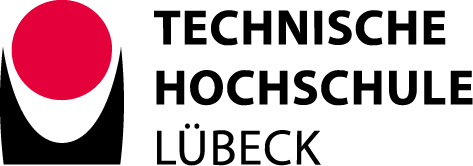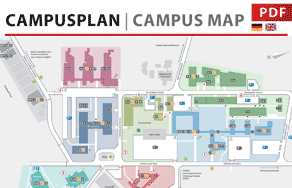Dieses CoSA-Seminar findet als Webkonferenz statt (BBB Greenlight: CoSA-Seminar). Die Webkonferenz wird ab ca. 11:30 Uhr für die Teilnehmer zugänglich sein.
Arthur-Vincent Lindenberg: Object localization in seawater via electrical impedance measurements
Artificial technical infrastructures already exist on and in the seabed, including cables for energy and data communication and pipelines for oil and gas. There are also contaminated sites such as blind munitions, which can contaminate the sea, and which can hinder the development of new infrastructures. Objects such as blind ammunition, mines and barrels should be discovered and removed in order to avoid damage to people and the environment. Deep-sea cables and pipelines are regularly checked for their laying depth, for example, which can change due to currents. One approach to the tracking of cables, the detection and localization of metal objects is electrical impedance spectroscopy and tomography. The first results of this approach are presented here, which were achieved with a test stand in which impedance measurements in salt water are reproducible under laboratory conditions. With the test stand variable objects can be varied in their position in space in relation to a static electrode array. The results show the horizontal and vertical sensitivity of an electrode array for different dimensions of objects, based on the measured impedance. A simple algorithm that uses previously measured impedances in the form of a look-up table basically shows the successful detection and localization of objects in the vicinity of the array.
Vortragssprache: N.N.
Björn Sievers: Inference and Performance Analysis of Convolutional Neural Networks used for Human Gesture Recognition on IoT-Devices
The steady growth in computing power of microprocessors recently enabled the implementation of rudimentary neural networks on these devices. This has drawn the focus of scientists to this still a very unexplored topic. In this paper, we investigate Convolutional Neural Networks implemented on a microcontroller for the real-time classification of human gestures. We examine the effects of the complexity of the neural network on the inference time, classification accuracy, and energy demand. The neural networks are trained and tested on a generated dataset, which consists of 10 labeled gestures, generated from a triaxial accelerometer. The neural networks are deployed on the Adafruit Feather Bluefruit Sense board. This board hosts the nrF52840 SoC which is built around a Cortex-M4F- based microcontroller. The measurement results show that more complex neural networks achieve higher accuracies, but involve higher energy requirements and longer inference times.
Vortragssprache: N.N.
Christan Elsner: Gigahertz Ground Penetrating Radar (GPR) for Sediment Exploration
In order to detect measurement objects (e.g. cables and ammunition) in the Wadden Sea, a procedure via ground penetrating radar from a drone is to be determined. For this purpose, a feasibility study with different dispersion media will be carried out in an aquarium. First, a series of measurements in water with a high degree of absorption will be implemented, followed by air as reference medium, followed by sediment with different degrees of saturation with seawater. The measured data are then evaluated in order to determine the attenuation and the propagation velocity for each medium. The aim is to determine the attenuation to determine the required signal power for GPR with GHz in the Wadden Sea with penetration depth up to two meters lateron.
Vortragssprache: N.N.
Jan-Philip Kniesel: Modeling the Interference of Ultra-Wideband Signals in Multipath Propagation Channels
Recently, one anchor Ultra-Wideband localization systems evolve as a new approach to determine the position of a tag with minimum infrastructure effort. The key of this method is to use a model of the propagation channel including the behaviour of multipath propagation. An issue of multipath propagation channels is, that signal echos can interfere at the receiver. To get a good model of the channel it is necessary to consider interference behaviour correctly. In this paper, we propose a model for Ultra-Wideband signals in multipath propagation channels that consider the phenomenon of interference and evaluate the model with measurements. We show that the proposed model is not able to represent a received signal in amplitude and signal shape completely correct. Additionally, we used the energy of a signal to compare the model and the measurement. We show that the changing of the energy due to different interference patters is represented by the model in a good agreement with the measurements.
Vortragssprache: N.N.
Sascha Schramm: Modeling the Path Losses of Ultra-Wideband Signals in Multipath Propagation Channels
Recently, a single anchor localization system is a new scientific approach for localization of a tag in a given room by utilizing only one anchor. For this new localization approach, a model for the impulse response is necessary that includes multipath propagation. Theoretically, each position has a unique signal response to a transmitter in a given room, which is called a fingerprint. A part of this fingerprint is the path losses of the original signal and the signal echo. The calculation of the distance between transmitter and receiver, based on a receiving signal, is a basic approach. However, this paper determines the path loss coefficient in a given room to obtain an approximate model that describes the path loss. The evaluation measurement shows a model accuracy of d1 = 11 cm. In sum, this model is a good approximation, which needs further researching to improve the model.
Vortragssprache: N.N.
Torben Winkel: Modeling UWB Multipath Propagation Considering Material-Dependent Reflection Effects
In Industry 4.0, indoor localization evolves as an important research area. Ultra-Wide-Band (UWB) transceiver systems allow single-anchor based tag localization. The short temporal extent of UWB signal impulses enables the interpretation of multi-propagation paths. Accordingly, the anchor captures the Channel Impulse Response (CIR) of superposed signal echoes from all existing paths. Reconstruction of superposing effects at the receiver antenna requires the prediction of each path’s received signal power. So far, prediction models consider propagation losses. In the case of reflections, the losses of UWB signals are not well documented. Therefore, we introduce a new transceiver model considering multipath and material-depending reflection losses. Based on our measurements, we show the material-dependency of reflection losses and quantify them by refraction indices as we introduce them in our model.
Vortragssprache: N.N.

